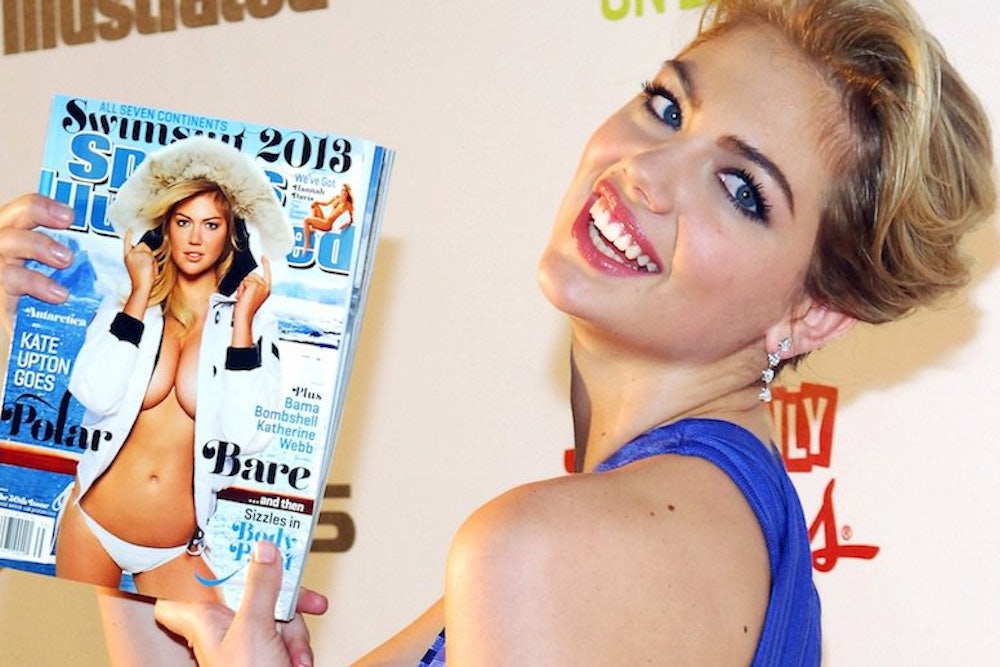Sports Illustrated, one of the world's top purveyors of the still image over the past six decades, has announced it will no longer employ staff photographers. That staff has waxed and waned over the years—and has been at zero previously, even in the magazine's heyday—but it was down to a half-dozen men who lost their jobs with the decision. One, Robert Beck, shot the magazine's two most recent covers.
The magazine will still arrive in mailboxes each week, and its pages will still be stuffed with images; to most readers, the loss will be vague at best, symbolic at worst. Sports photographers nearly have always been less famous than their subjects. It's not as if anyone ever wondered whether the person who shot Y.A. Tittle or Bobby Orr or Dwight Clark or Brandi Chastain or Michael Jordan or Phelps-Cavic or Usain Bolt or Muhammad Ali (or for that matter Tyra Banks) had a spot on the masthead, a 401(k), dental. Newspapers have been slashing staffs for years, using wire services and stock photos in place of their own stuff. Magazines' model has generally been to keep small staffs, if at all. The economy seems hostile to the idea of staff photographers. Whatever benefit SI derived from having its own stable apparently has evaporated in comparison to the costs.
Even the most charitable view of SI's health has to assume this is not a sign the magazine is exactly flush with cash. Its digital incursions notwithstanding, it's still a shop steeped in print, which is less and less how fans experience sport. I say this as someone who truly enjoys writing and reading about sports, and who gets verklempt even looking at a snapshot of, say, Mary Decker in Dantean anguish after falling in the '84 Olympics. It's hard not to view this drawdown as print ceding ground to ESPN, to the transfixing repetition of sports GIFs, to YouTube's infinite vocabulary of highlights, to the zoo of online sports sites. Whatever heyday the still image had online has been lapped by the speed of streaming video on phones and tablets. Basketball players continue to "posterize" one another—that is, dunk over someone so spectacularly it belongs immortalized in analog ink-and-paper on some kid's wall. We just watch it now as Vines. Those memories are perpetually in motion, unless you take a sec to appreciate the poetry of, say, Kawhi Leonard or LeBron James frozen in mid-explosion on SI's cover. That real estate still counts.
Without staffers, the magazine's likely to turn all the more to freelancers, who have been snapping a huge fraction of its photos in any case. Last summer I wrote a feature for the magazine that saw me and one such freelancer, name of Darren Carroll, climb into a van with professional rodeo cowboys and drive around the West for a week. Carroll was geeked for the rodeo trip in part because it was a return to a subject he loves. For years he had shot the National Finals Rodeo for the magazine. Time was, he'd go to Las Vegas for that entire 10-day event, snapping scads of pictures, among which maybe one exceptional photo would run in the magazine. As budgets shrank, he got fewer and fewer days to find that single image. Eventually, sending a shooter at all to that niche event was determined not worth the expense.
Scarcity of choice is the danger with this kind of drawdown. Instead of having thousands of photos from which to choose the sublime few to run on their pages, the magazine's editors may have only hundreds. And rather than see an array of esoteric sports, we'll probably get a diet comprising more of the sports that we can already find on television—baseball, college and pro football and basketball, some hockey, and the big-event golf, tennis, NASCAR, fights, and Olympics. (Or, hell, maybe freeing up money will give SI flexibility to take more risks—here's hoping.) Even at those events, the photographers SI had on staff had reputations as transcendent shooters, able to pull an image out of a scrum at a golf tournament or an NFL game that awed even the peers who sat beside them at those events. We'll never fully realize what we're missing, to an extent; epistemologically, it's hard to know what we don't know. But even Kobe Bryant knows the essential premise at play here: You miss all the shots you don't take.
